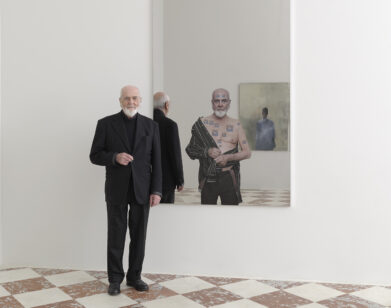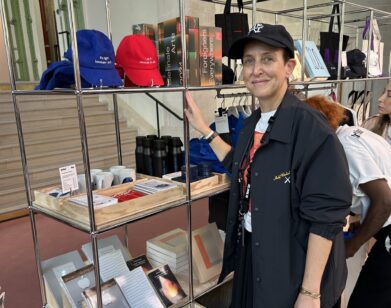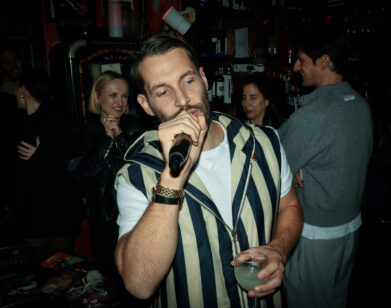Talking With the Art World’s Fly on the Wall
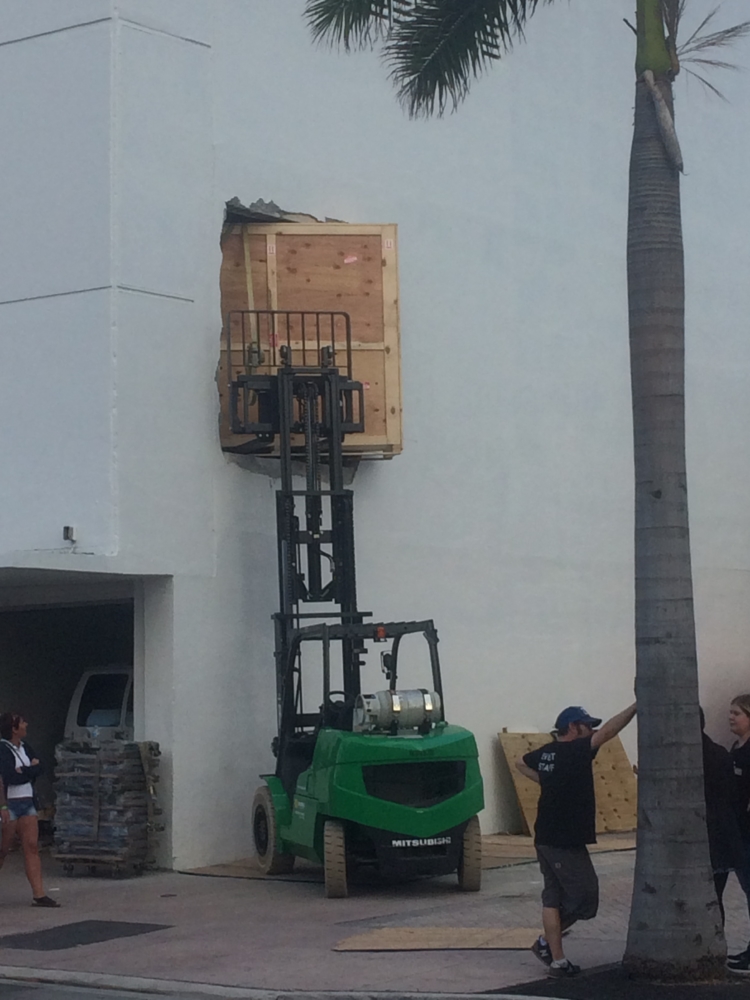
Art handling in progress. NADA Miami Beach, 2016. Photo by Clynton Lowry
“People tell me all sorts of stories,” says Clynton Lowry, the editor-in-chief of Art Handler. “Massive hidden caves of art storage in Kentucky; an overnight stay with a Giacometti in a motel in Newark; huge galleries catching fire; stolen artworks; Hurricane Sandy–related insurance scams; forklifts going through crates with million-dollar paintings in them.” Lowry’s fine arts magazine and Instagram account, @arthandlermag, is the only one of its kind dedicated to a blue-collar discipline nested within a very white-collar world. The resulting content is a singular fly-on-the-wall perspective of working with the world’s most precious cultural materials in the mansions and penthouses of the ultra-wealthy. Past their gates and doormen, Lowry has encountered obscene cults of personality, megalomaniacs, and the idiosyncrasies of the 0.1 percent.
So, how much should someone tip an art handler? Questions such as these, and more, were on our mind as we spoke with Lowry the day after the art world returned from a week of Art Basel, parties, and Young Thug paintings.
———
What’s the oddest thing a client has asked you to do?
This past November, I was working at Christie’s Auction for the Hockney sale, where I was asked to space rows of chairs exactly ten inches apart. To do this, you’re handed a PVC wand with a piece of cardboard labeled and cut exactly to ten inches. And there I was, spacing the rows exactly ten inches apart, while the Christie’s auctioneer was rehearsing lines before the big sale: “At 42, 45, 48. Give me 50, 50 million. 55, 60, 65.” It wasn’t so much odd, as it was just that I’d never done it before.
I’ve had a client ask me to hang a painting sideways because they needed it to fit above a cabinet. Apparently, they knew the artist and said he would die if he saw it that way—good thing he was already dead. I remember the owner assuring her husband that the Nancy Graves in Florida was hung the wrong way, too.
So much of what we do is for rich people, and how they live is so different from us that any request becomes strange, or they expect you to hang four Ellsworth Kelly panels above a stairwell that has a three-story drop below it. Somehow you make it work, and it doesn’t seem so crazy. If a painting doesn’t fit in the elevator, you’ll be either riding on top of the elevator, or you’ll be taking the stairs. Recently, I saw two guys walking a painting up 40 flights of stairs. It must have taken them two hours. If something doesn’t fit at all, you’ll be getting permits and hiring a crane operator to bring the work in through a window on the 40th floor.
The wealth disparity between the person installing a work and whoever owns it feels like one of the most awkward relationships in culture.
The oddest thing is that you find yourself doing favors for billionaires. You have to remember that these clients are part of a culture where nobody says no to them. Something as innocent as pretending to like the work you’re handling can be very awkward if you’re not good at it. I’m not very good at it, and that has led to some awkward moments with clients. Receiving a tip can be awkward too—especially when it’s very little. I think collectors should tip at least ten percent of whatever the artwork is worth. Servers in restaurants get 20 percent. It’s not like you’re delivering a pizza. It’s a Pistoletto, you know?
A friend told me he was recently installing an Ad Reinhardt in a collector’s home, and that the owner walked in and politely asked him to leave the room so he could be alone with the painting.
Another time, I was freelancing at Elizabeth Dee and was asked to stay to assist the catering staff for John Giorno’s dinner party. Guests kept shattering their wine glasses on the gallery floor. Naturally, I was in the back with the catering staff, but I was asked to clean up the broken glass any time something spilled. At one point, I was on my hands and knees cleaning, and all of a sudden I’m underneath Michael Stipe and Joan Jonas. Joan was my critic in grad school, and we both pretended not to know each other.
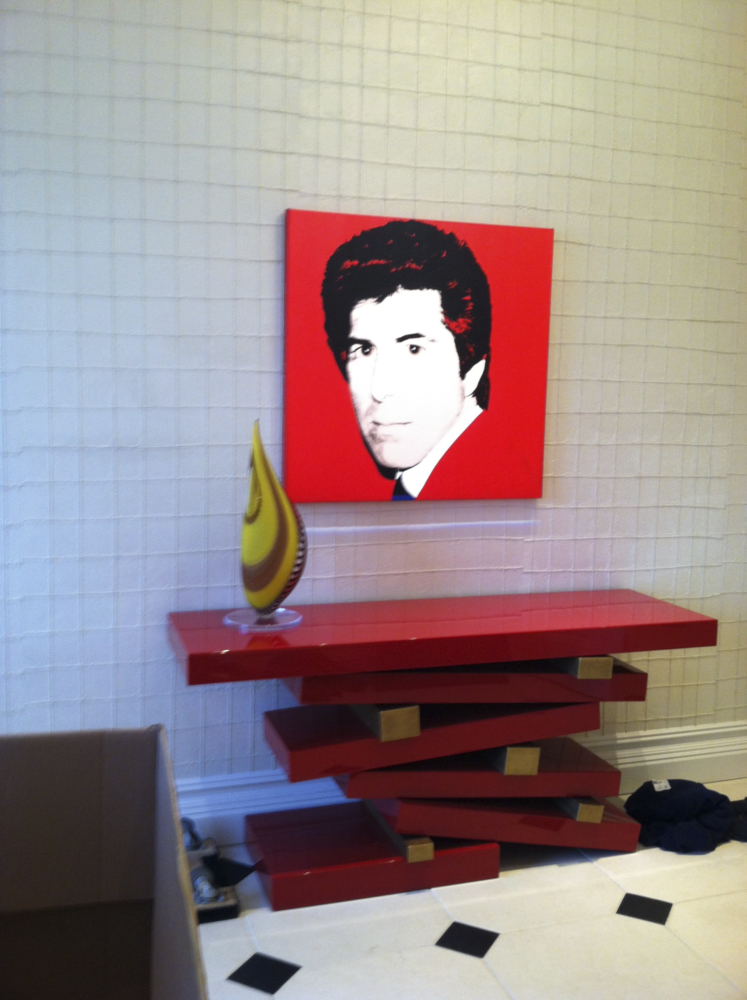
Warhol’s portrait of Steve Wynn, NADA 2016. Photo by Clynton Lowry
Where are some of the more bewildering places you’ve handled art?
My personal favorite, and one of my first jobs, was installing work for the hotel magnate Steve Wynn in his two-story penthouse at the Ritz-Carlton. He had just moved in and was renovating, so it was jam-packed with people. Multiple crews were working at once, including two or more art handling companies, interior decorators, contractors, a cleaning crew specifically for the contractors, and even alarm system technicians specifically for applying sensors to the backs of paintings. The technicians only spoke German. Then, there was Wynn’s personal staff: his assistants, housekeepers, butler, chefs, you name it. I’ve never seen anything like it. It was like being on a movie set. He had a team of ex-Navy SEAL bodyguards walking around like Secret Service, watching for any opportunity to snap your neck. It was unnerving.
I remember the walls were carpeted and everything was immaculate. Even in the chaos. At some point, someone rolled a C-Bin in on a dolly, making tracks all over the new white carpet. The contractor shouted, “You gotta be fucking kidding me!” They got it cleaned up.
I vividly remember holding Picasso’s Dora in his billiards room when I heard Wynn’s voice over the intercom: “Andrea, Andrea…” He was calling his wife for something.
“I think collectors should tip at least ten percent of whatever the artwork is worth. Servers in restaurants get 20 percent. It’s not like you’re delivering a pizza. It’s a Pistoletto, you know?”
Less exciting at the time, but more memorable now, was when I was installing art at Ivanka Trump’s penthouse in the Trump Tower. She was there, as was Jared Kushner and their art advisor, who had invited them to an opening at Still House. This was 2012. I think we were installing a Dan Colen or an Alex Israel. Jared handed us a $60 tip, which we split three ways. I still have the Trump Ice water bottle.
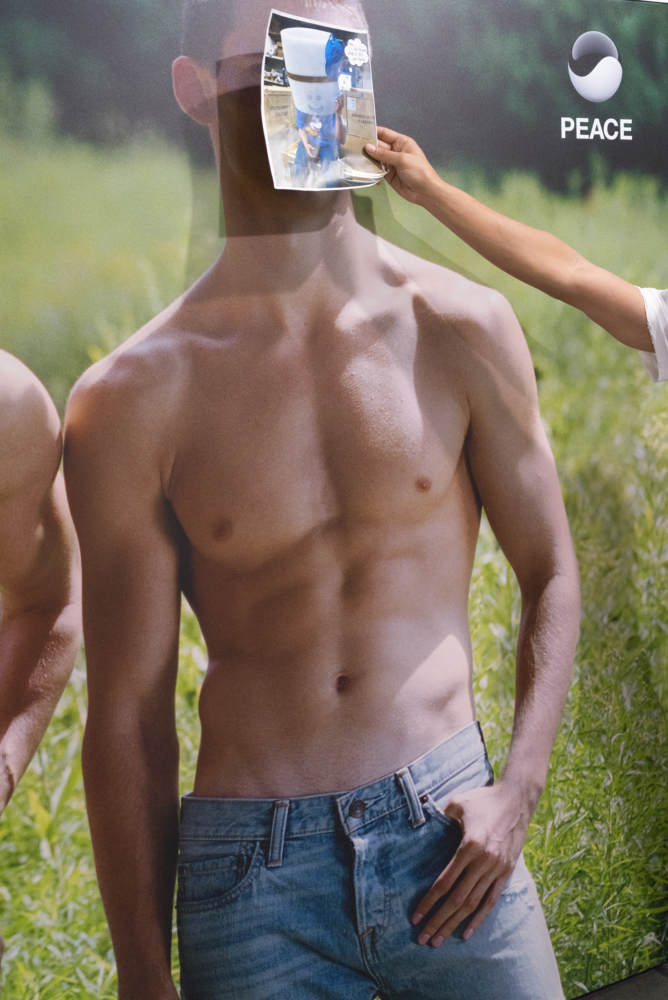
Artwork by Timur Si-Qin. Art Basel Miami Beach, 2014. Photo by Gideon Barnett
What’s the worst workplace injury you’ve heard of?
The art handler who died from the falling Richard Serra sculpture, and then the other one who lost a leg strapping another Richard Serra work onto a truck. My friend lost the tip of his finger on a planer while building stretchers for a conceptual painter. I hear a rumor of an older art handler who suffered a heart attack and fell off a ladder and died at Miami Basel in 2013. I’m not sure if it was related, but they don’t always have the AC running while we’re working.
The workwear, and footwear, donned by art handlers seems insightful to me. What does it say when a handler is wearing Red Wings, as opposed to Doc Martens or Timberlands or Wolverines? If each “type” of art handler was a starter pack meme, how would you define them?
Some of the best-dressed people I know are art handlers. The best are the ones with the I-don’t give-a-fuck attitude, which most seem to have in their own way, where everything is torn and has some wear to it—that’s when I tend to think people look best.
Red Wing or Frye boots wearer: The guy looks like a carpenter on his or her first day at work, the “urban carpenter.”
Timbs wearer: A union art handler.
Wolverine wearers: The reason the rent is so high in your neighborhood. Also, the guys who can’t build a square-thing to save their lives, but talk about things like “woodporn.”
Then, there’s L.L. Bean pack-my-bags-and-head-to-the-Berkshires-and-get-a-job-at-Dia art handlers. The Steven Alan, Gant, J.Crew ones. Myself, basically, but I only wear sneakers, which is dangerous because a crate can crush my foot or toe on any given day if I’m not paying attention. The real test of style is how a person looks in booties.
How have people in the art world responded to Art Handler?
The anger is real when there’s a chance that someone’s livelihood is on the line. Keeping things private—completely hidden and secretive—is essential for business but nearly impossible with today’s social media. It’s amazing how hard people are working to keep this perspective hidden. I know I’ve pissed off a lot of people along the way, directly or indirectly—people who see what I’m doing as reckless or bad for business. Of course, you’re not going to please everyone, and you know everything in this world is about pleasing the client. They draw the line at anything that could risk that. But things are changing, which is funny. It wasn’t like this that long ago.


